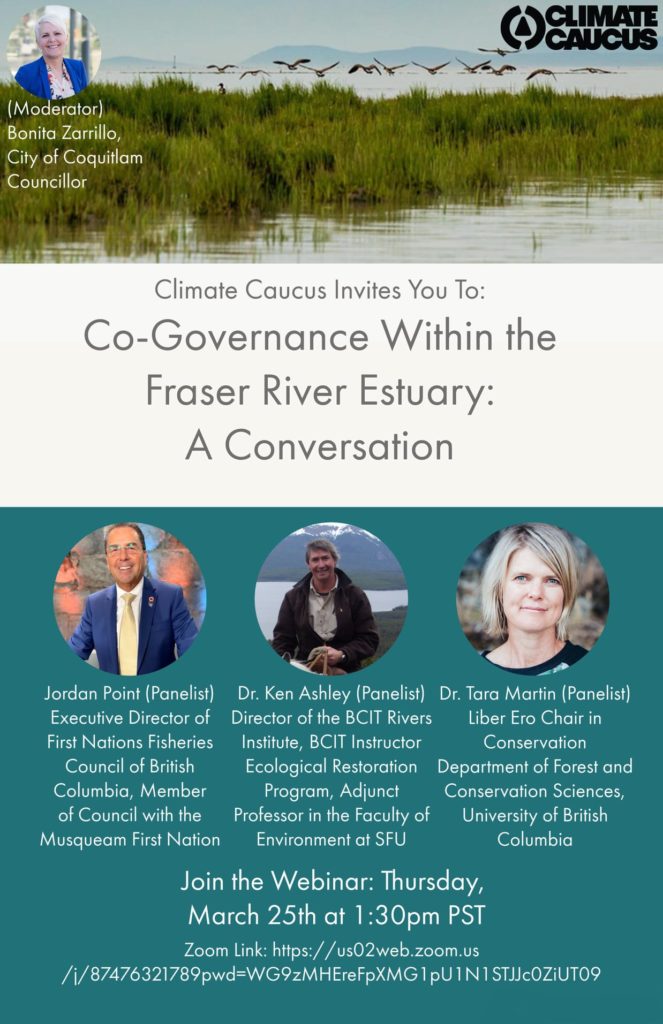I’m going to try herd not to be too political here, but there has been something brewing that intersects both with my City Council life and my being-a-Professional-Environmental-Scientist life. As is typical in both, I have had several conversations with lots of different people over the last year or more about this, but while I was talking, others were doing, and one of those get-it-done people has put together an event where people who both talk smarter than me and do more than me are going to talk about what needs to be done if we want to be smart about doing things.
I’m talking, of course, about FREMP.
The Fraser River Estuary Management Program was, for almost 30 years, a non-profit agency funded by all three levels of government that supported responsible development and environmental protection along the Fraser River Estuary – essentially from the ocean to the Mission Bridge. Along with a sister agency called the Burrard Inlet Environmental Action Program (“BIEAP”), this was an organization that brought stakeholders together to coordinate planning, protection, and development of the federally-regulated shorelines of the Lower Mainland.
This coordination meant that when there is a change in industrial use along the waterfront, when a community suggested a project like the proposed Pier-to-Landing walkway in New West, or when environmental remediation or compensatory habitat projects are needed, there was a “one counter” approach that allowed a coordinated review by the three levels of government and relevant First Nations. It was easier for each of the government agencies, because they knew where everyone else was on projects. It was easier for proponents because they could speak to one agency and not get mixed messages from different levels of government. It was better for the estuary because impacts and compensation could be coordinated based on a plan that sought to balance the many pressures on the system. As a bonus, all of the works along the river would provide data to an invaluable repository – data vital to inform future planning and to help us understand the health of the ecosystem.
FREMP wasn’t perfect, but it didn’t deserve to be killed. As part of the now-legendary gutting of Canada’s environmental protections under the Harper Government, the Federal contributions and support for the program were cut. This matters, because with all the interagency overlap in Burrard Inlet and the Fraser River, ultimately they are federally regulated. When the Port and the Department of Fisheries and Oceans could no longer participate, the Provincial Government ministries followed their lead, and the agency was folded, leaving local governments in a bit of a lurch. The Port was tasked with environmental reviews within their narrow jurisdictional parameters, and every project was going to have to find its own path. Regional coordination was no longer coordinated. Project proponents are on their own. There is no longer a cohesive regional environmental plan for the Estuary of the most important salmon river in Canada, or for the Burrard Inlet.
The situation is shitty, and has been shitty for long enough. Several stakeholders along the river, including local governments, environmental organizations, and First Nations are talking about what I hesitate to call “FREMP 2.0”. As you may read into the above, there is some political baggage around BIEAP- FREMP, and though it was valuable, it was not a perfect design. The discussion now is around what would a better FREMP look like? There are two important components, and the interaction between the two is obvious.
The first is a return to inter-agency review and coordinated regional planning in the estuary. A one-counter stop for project applications, and a clearing house for project details and data. This will benefit local governments hoping to revitalize their waterfronts, or protect valuable industrial land-use areas. It would also serve developers and industry who would have a clearer, more predictable path to project approval, mostly by having clear understanding of the stakeholders to be engaged. Ideally, it would also make it easier for First Nations to manage the constant demand for consultation feedback by providing them the resources they need to assure their concerns are addressed, and by assuring the knowledge they carry about the history and present of the river informs planning discussions.
The second is to provide oversight to the health of the estuary ecosystems. This would mean coordinated habitat protection and restoration, and a return to collecting that important data depository of the current and future health of the river that sustains us. Part of this is understanding the changes in the river that are coming with climate change, and developing strategies to address future flood risk, ecosystem services, and water quality concerns.
All this to preface: if you care about the Fraser River, development along the river, and the protection of this unique ecology, you may be interested in this free Webinar being put on by the Climate Caucus next week. Coquitlam City Councillor is the main organizer and moderator, and she has three brilliant panelists who know much more than I about the ecology of the Fraser River, the threat, and opportunity. This should be a great introduction to the conversations that no doubt lie ahead for the Metro Vancouver region. Join us!
